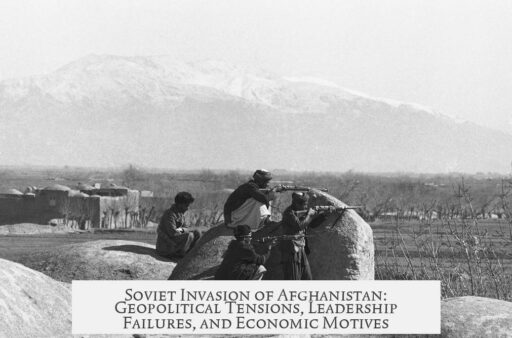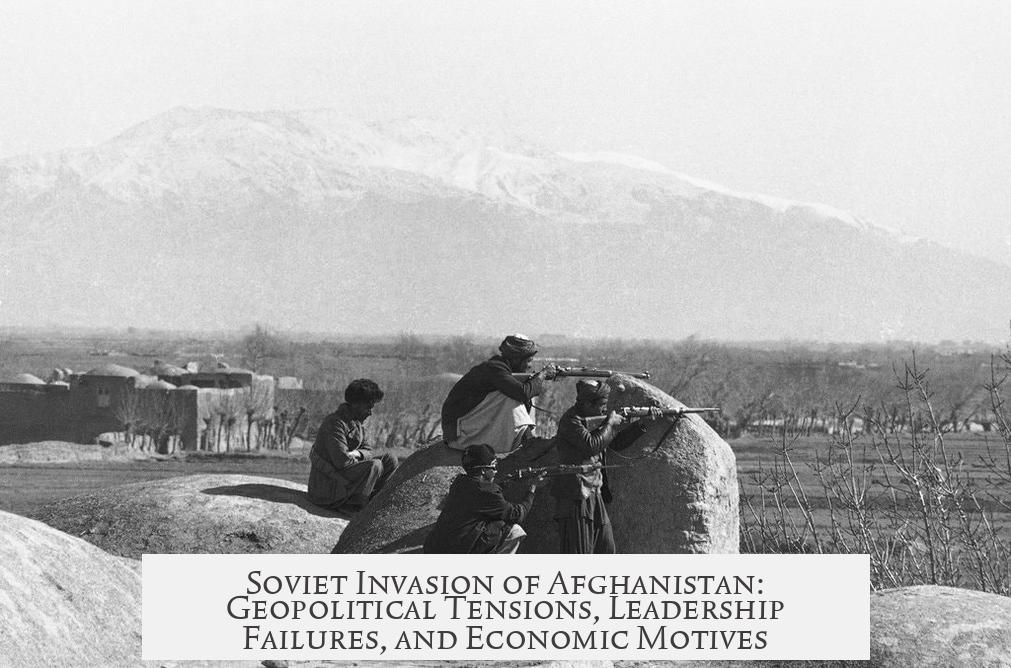The Soviet Union invaded Afghanistan in 1979 to secure its geopolitical interests, maintain influence over a key ally, prevent the spread of Islamism in Central Asia, and pursue economic opportunities. The invasion aimed to support the fragile communist government and counter US influence during the Cold War.
The USSR viewed Afghanistan as a crucial buffer state to protect its southern borders. Historically, Russia sought friendly regimes along its frontiers to reduce vulnerability. Afghanistan’s instability threatened this security strategy. The Soviet leadership feared losing a communist ally, which risked the collapse of Soviet influence in the region.
Cold War dynamics played a major role. With the US entering Afghanistan by backing the mujahideen and previous regional tensions, the Soviet Union felt compelled to act decisively. The invasion aimed to prevent a hostile government from rising and to counterbalance US presence in the area.
Supporting the Afghan communist government was central. The People’s Democratic Party of Afghanistan requested help against growing insurgent pressure. Without Soviet intervention, communism in Afghanistan seemed doomed. Moscow’s backing sought to establish a stable, friendly regime, ensuring long-term alignment with Soviet interests.
The Soviets also feared the spread of radical Islamism after the Iranian revolution of 1979. They worried militant Islamic ideas might infiltrate Central Asian Soviet republics, destabilizing nearby regions. Containing this ideological threat was key to preserving internal security.
Leadership changes influenced the decision. Brezhnev initially hesitated, but the hardline successors Andropov and Chernenko pushed for a full military invasion. Their harsh tactics alienated locals and worsened the conflict, but reflected a commitment to maintain control by force.
Afghanistan’s natural resources also presented an economic incentive. Rich rare earth minerals, gold, copper, and iron offered potential value to the Soviet economy. Control of these resources promised strategic and financial benefits.
- The Soviets sought border security through friendly regimes in Afghanistan.
- The invasion was a Cold War move to counter US influence.
- Backing the communist government aimed to sustain Soviet control.
- The USSR feared Islamist ideologies spreading to Central Asia.
- Leadership shifts led to a hardline military approach.
- Access to valuable Afghan minerals factored into Soviet motivations.
Why Did the Soviets Invade Afghanistan?
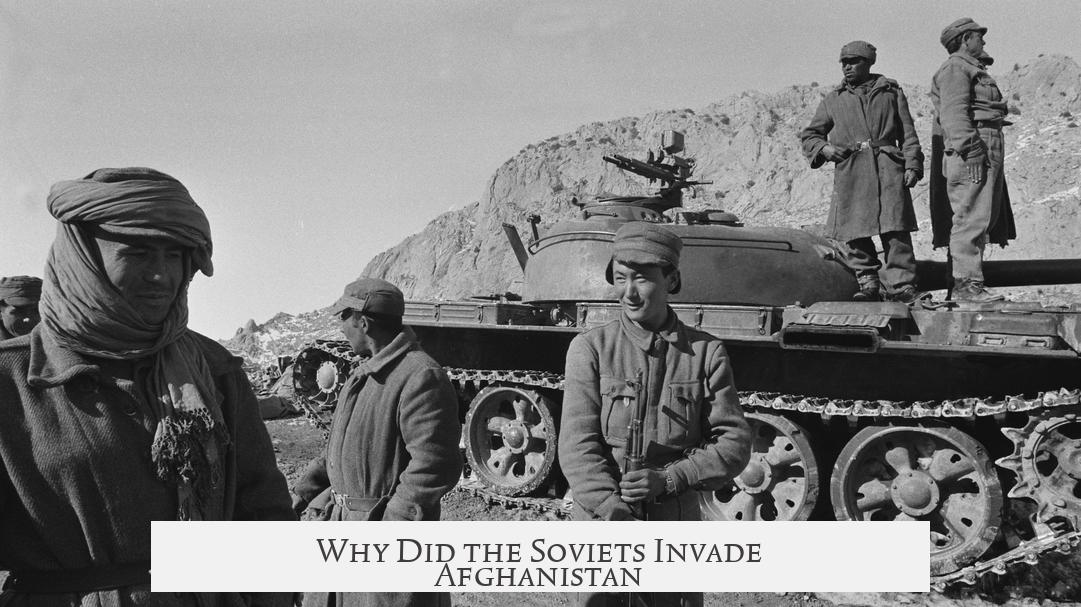
The Soviets invaded Afghanistan in 1979 to secure their southern borders, maintain a friendly communist regime, compete with the United States in the Cold War, and contain the spread of Islamism. Plus, they eyed Afghanistan’s untapped mineral wealth as a bonus prize.
That’s the straight answer. But let’s dig into the layers behind this Cold War episode. It’s a tangled story of paranoia, ideology, power struggles, and some seriously questionable leadership decisions.
Geopolitical Strategy and the Border Paranoia
The Russians have long suffered from a paranoia about their borders. Historically, they fear invasion from the south and west. So naturally, they want buffer states—friendly or puppet governments acting like shields.
From Moscow’s standpoint, central Asia is a crucial playground for those buffers. Afghanistan’s location made it a strategic prize. Control there meant fewer headaches about hostile neighbors, less risk of Western-backed adversaries setting up shop right next door.
Throw in the Cold War rivalry, and it’s clear the Soviets didn’t just stroll into Afghanistan for fun. The United States already had interests in the area. In conflict style, if one superpower steps foot in a region, the other feels compelled to follow. It’s similar to a very tense game of geopolitical chess where both players desperately want to call the shots on the battlefield.
Keeping Communism Alive: More Than Just Aid
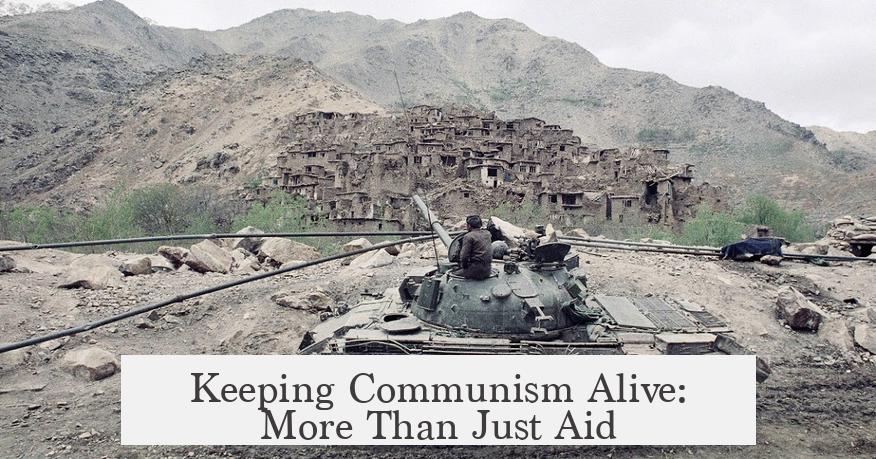
Before the invasion, the Soviets were only providing aid to the Afghan communist government. But the regime was shaky—fractured by internal strife and strong opposition forces.
There was “zero chance” of communism surviving in Afghanistan without a heavy hand. That’s why the Soviets decided to shift gears and send in troops to prop up their ally. They wanted a reliable, Moscow-friendly communist regime holding the fort.
This wasn’t mere kindness or ideological charity. It was a calculated move to maintain influence in that part of the world. Losing Afghanistan might have meant a domino effect in the rest of Central Asia, which the USSR simply couldn’t risk.
Fear of Islamism Spreading
The Iranian Revolution in 1979 scared the Soviets well beyond Tehran. They feared a wave of radical Islamism could flood Afghanistan and then spill into Soviet Central Asian republics. This religious and political upheaval threatened the fragile control Moscow had in those territories.
Imagine watching a fire start next door and worrying it might jump your fence. That’s precisely how the Soviets saw Islamic fundamentalism. Invading Afghanistan was partly an attempt to put out that fire before it spread.
The Messy Tale of Leadership and Decision-Making
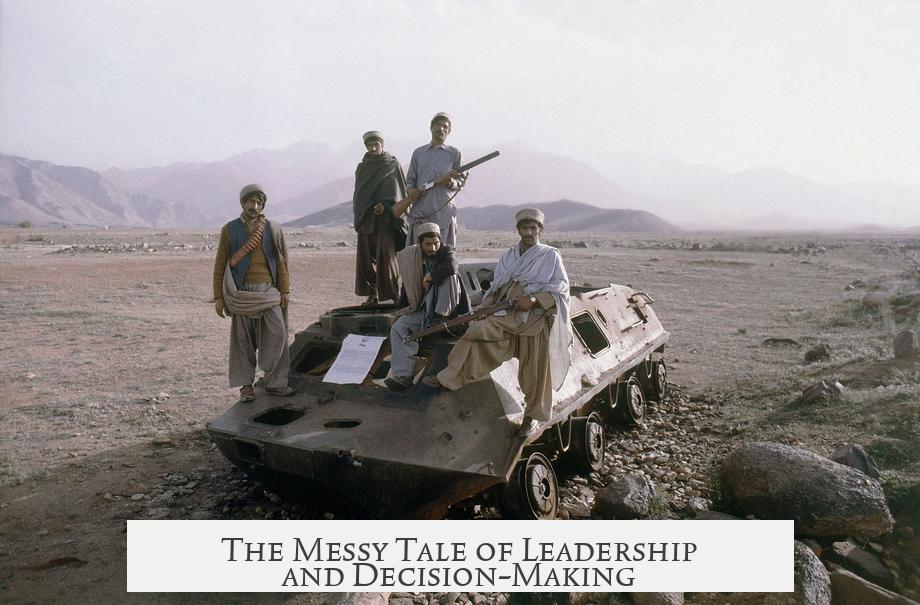
Yuri Andropov and Konstantin Chernenko—the Soviet leaders who followed Brezhnev—went “all-in” on Afghanistan. Brezhnev initially seemed to understand the risks. Military invasion? Not his favorite option.
But Andropov and Chernenko, well, let’s say they weren’t winning any popularity contests. Chernenko, in particular, allegedly ordered some brutal measures like booby-trapping toys to root out insurgents, which only made the locals hate the communist regime more.
This scorched-earth approach severely undermined local support, complicating Moscow’s plans. It’s a typical example of short-term military fixes backfiring politically—a lesson as old as war itself.
The Hidden Economic Motive: Afghanistan’s Mineral Treasure Trove
Here’s the juicy economic angle: Afghanistan is rich in rare earth minerals, gold, copper, and iron—resources that big powers drool over. The Soviets were fully aware of this and probably had dreams of tapping into these deposits to boost their own economic power.
Rare earth elements especially have become indispensable for high-tech industries. Even back then, Afghanistan’s untapped mineral wealth was a tempting prize. You don’t just invade for ideology and politics; sometimes money talks loudest.
What Can We Learn from This 1979 Invasion?
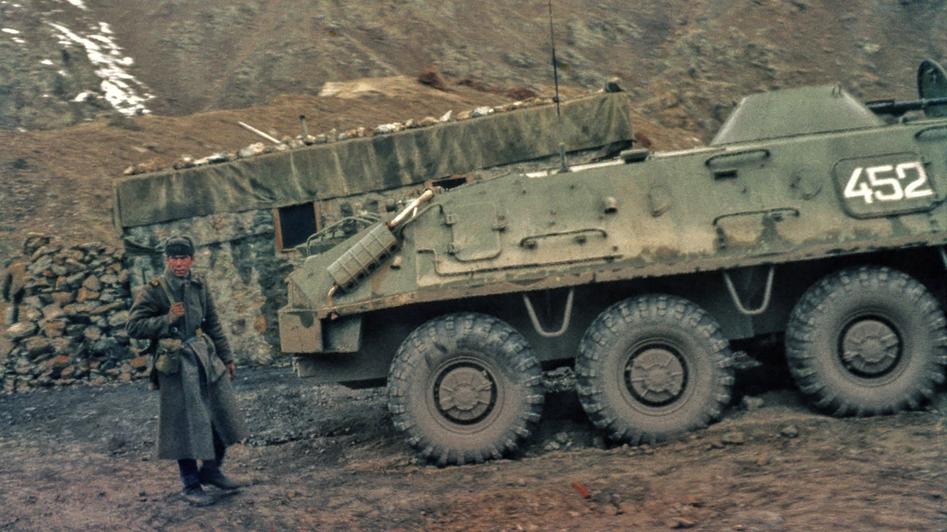
The Soviet invasion of Afghanistan is a cautionary tale about the clash between ideology, strategic paranoia, and military hubris. It shows how cold war tensions drove superpowers into foreign quagmires they couldn’t easily escape.
Moscow’s desire to secure borders, prop up communism, prevent Islamic influence, and access resources painted a complicated picture. But misjudged leadership and fierce local resistance turned a strategic move into a costly mistake.
So, Is It Just About Politics and Power?
Not quite. The invasion’s legacy reveals how economic interests and fear of ideology can push nations over the edge. It raises thoughtful questions: When does securing national interests become reckless interference? How do external powers balance ideology with local realities?
History shows there are no easy answers. The Soviets left Afghanistan after nearly a decade of brutal conflict, but the fallout echoed for decades.
In short, the Soviet invasion was a cocktail of geopolitical paranoia, Cold War rivalry, ideological desperation, bad leadership, and the lure of natural wealth. An expensive and painful lesson in how complex global ambitions can collide in one small country.
